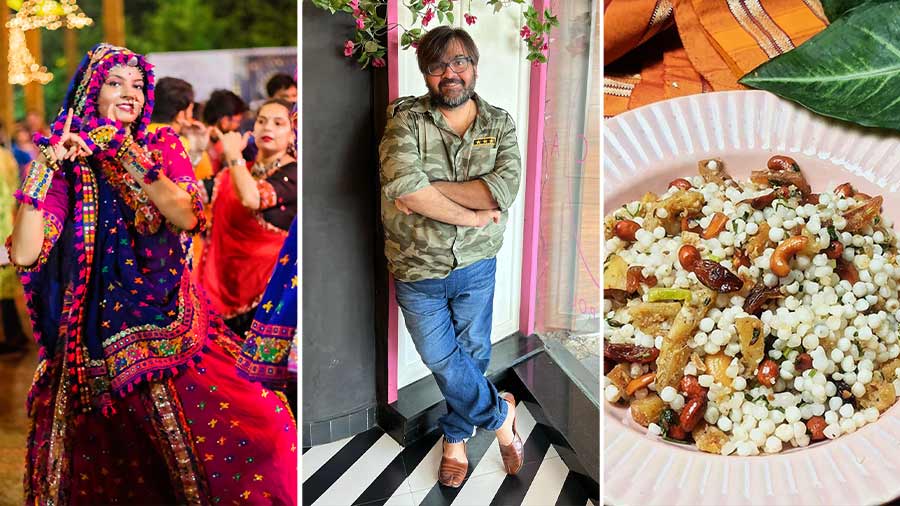As the city decks up for its grandest celebration of colour, joy and brightness, it’s time to welcome Maa with the Devi Paksha after Mahalaya, and mark the onset of the Sharad Navratri.
Sharad Navratri, for a Punjabi family, is a very auspicious and religious time. The family gears up to clean the house, especially the kitchen, and remove all onion, garlic and meat. We set up what we call ‘Khetri’, an earthen or brass dish filled with moist sand, and sprinkle it with wheat, hoping it will sprout into vibrant green stalks – symbol of new life and of Maa’s presence.
For the next eight days, we abstain from grains, pulses and cereals. There will be no pooris fried, the salt used will be rock salt and we practise what is called a Falahaar diet. One consumes potato, tubers, pumpkin, sago and dairy. Rice is replaced with Barnyard Millet or Samak Chawal, and Besan by buckwheat flour or Kuttu Ka Aata.

A Falahaar vrat thali Shutterstock
We eagerly await the first sign of wheat shoots, which we believe to represent the mother goddess. These shoots usually appear on the fifth day and stand bright till the eighth day, known as Ashtami. That’s when we open our fast or vrat by offering a prasad to the goddess. The prasad consists of atta poori, sooji halwa and dry chana. This is called the Dhama. We seek blessings from young girls or Kanjaka, similar to Kumari puja, and give them gifts and prasad. We wash their feet and pray that the Mother Goddess blesses the family with prosperity.
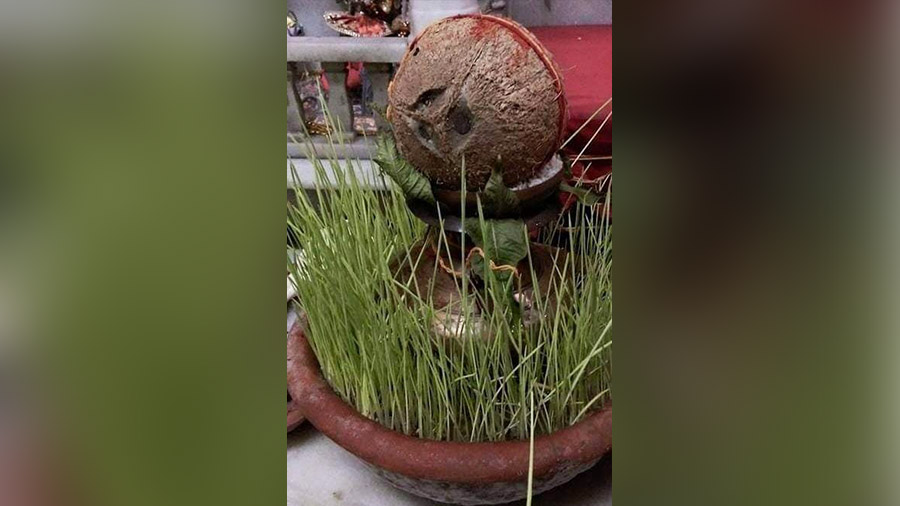
The eagerly awaited wheat shoots, which are believed to represent the mother goddess
Children in the family aren’t expected to fast. I remember how happy I used to be just to get my favourite Sabudana Wadas on Ashtami. They’re still my favourite today, although I’m the one making them now, and not mom. Every Ashtami, my grandfather used to give us a new ball and every child got a new five-rupee note. Back in the late ’80s, those five rupees made us feel truly rich! The prasad usually came in a new tiffin box and that day was absolute joy. All cousins would get together, have prasad and sing the Aarti.
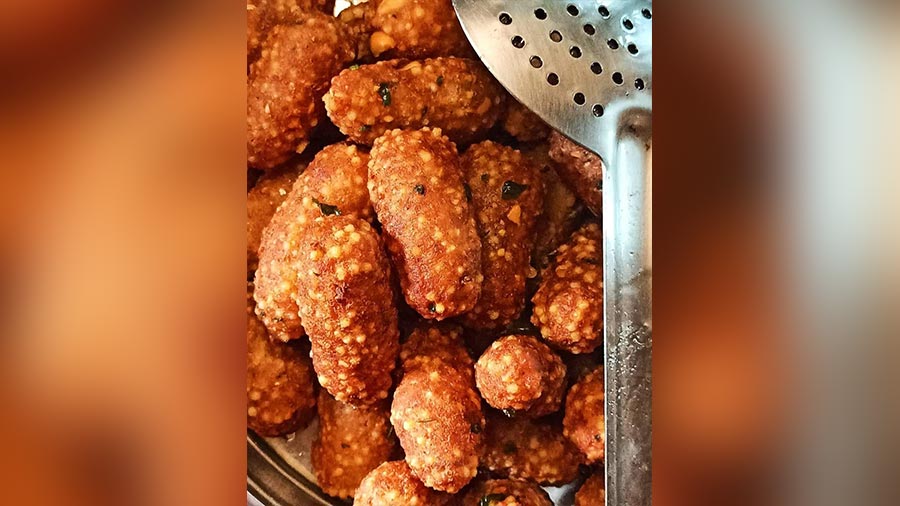
Sabudana Wadas
During Navratri, all nine days are considered very auspicious. It’s a time to start anything new, start a venture, talk of wedding prospects or move to a new house. These nine days, Maa is believed to be living in the house in the form of Khetri. During this time no meat / alcohol is consumed, even outside the house. We follow these practices with joy and seek blessings from Durga in our own little way.
As a country, India is so diverse. We share the same auspicious days and the same devotion to Durga, but through different rituals. Each ritual holds its unique beauty and symbolism, but at the end of the day, the one thing we all share in common is the emotion of joy.
I’d love to share two of our favourite family recipes for Navratri that we love to eat: Pumpkin Halwa and Kuttu Pethe Ka Cheela.
Wishing you a Shubh Navratri and Shubho Sharodiya!
Pumpkin Halwa
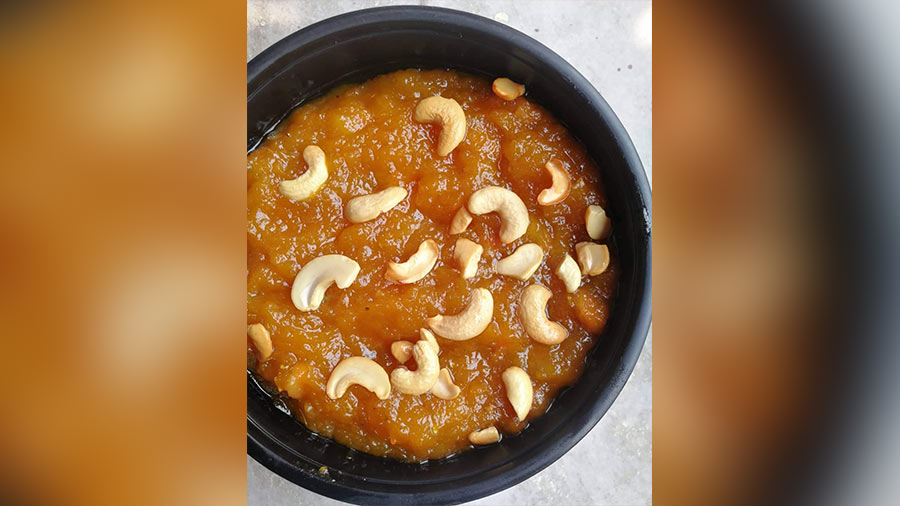
Pumpkin Halwa
Ingredients
- Pumpkin: 500g
- Water: 3/4 cup
- Ghee: 3 /4 cup
- Sugar: 3/4 cup
- Cashew nuts: half cup
- Cardamom powder: 1 tsp
Method
- Dice the pumpkin, add water and pressure cooker it until 3 whistles
- Cool and mash the pumpkin till no lumps are left
- Heat ghee in a kadhai and fry the cashew nuts till golden
- Add the pumpkin and cook till the water has almost evaporated. Stir continuously
- Add sugar and cook till sugar is dissolved and the halwa starts leaving sides
- Finish with cardamom
Kuttu Petha Cheela
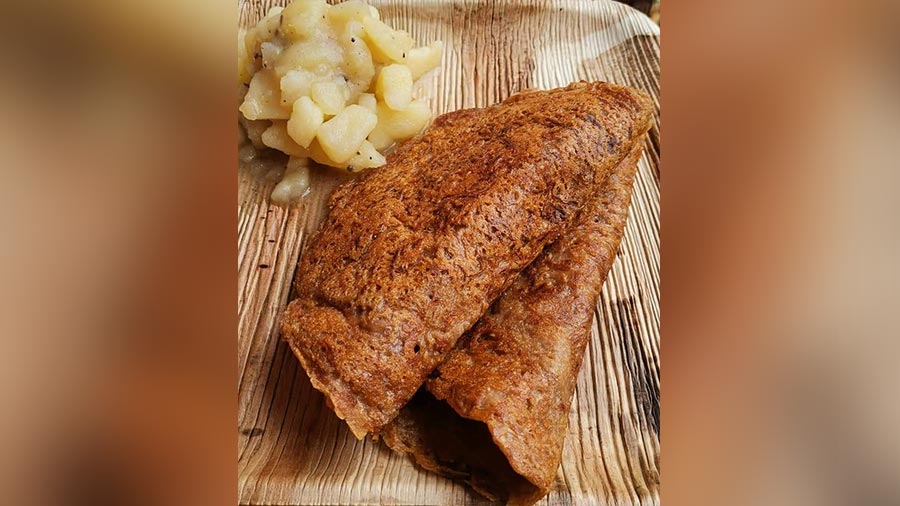
Kuttu Petha Cheela
Ingredients
- Ashgourd, grated: 1.5 cups
- Kuttu atta (buckwheat): 1 cup
- Singhada atta: 1 cup (water caltrop)
- Ginger paste: half tsp
- Chilli paste: half tsp
- Rock salt to taste
- Red chilli powder: half tsp
- Dhania powder: half tsp
- Jeera powder: half tsp
- Water as needed
- Oil / ghee for frying
Method
- Mix all ingredients with some water to make a thick batter
- Fry the cheelas / pancakes on a slow flame on a non-stick pan with few drops of oil until golden on each side
The author (@rahul.arora.1982) is a chef, restaurateur and menu consultant. Check him out on Bong Eat’s Rannaghore Ke? Episode 8 here.
